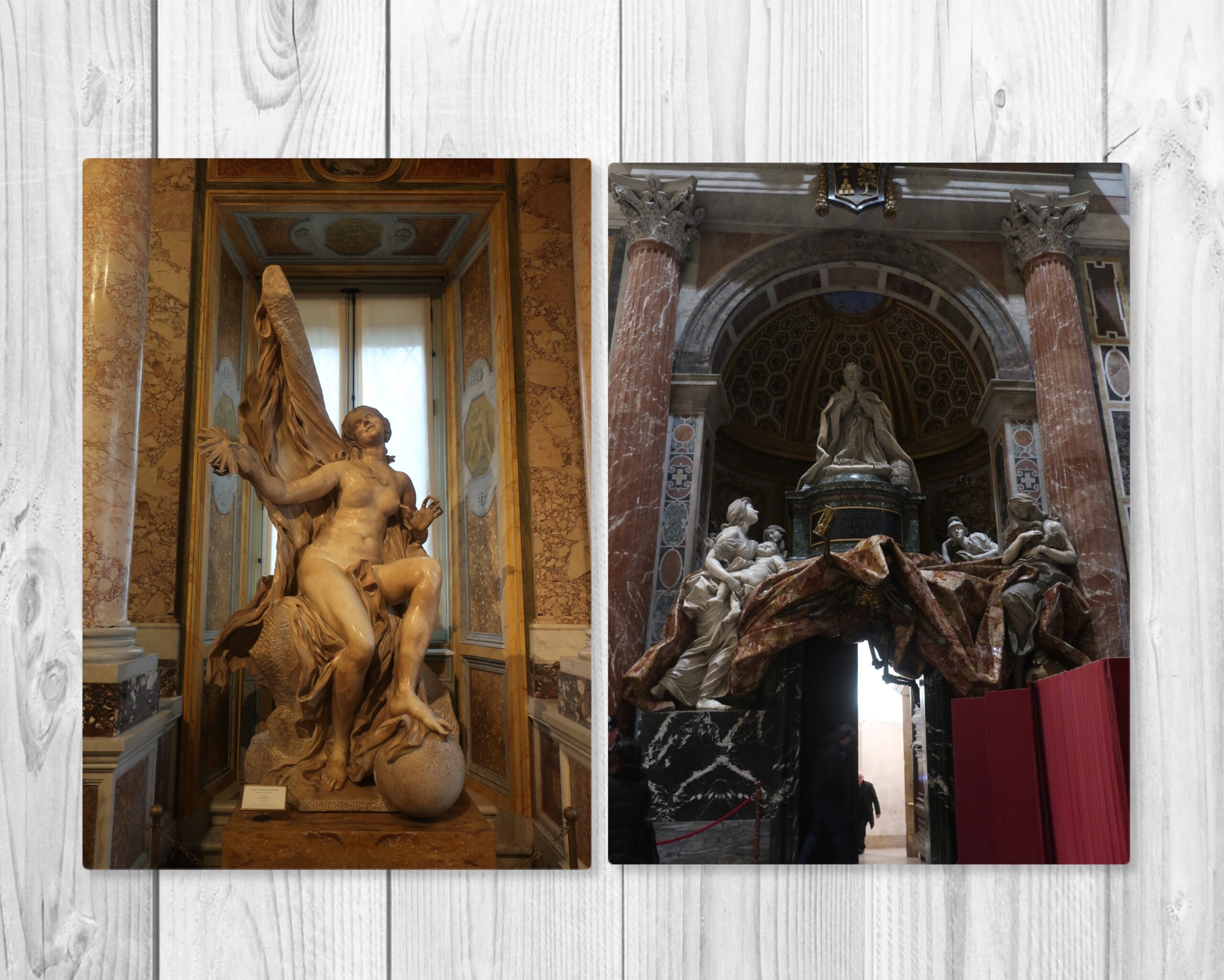Table of Contents
(40) Bernini Suffered from Disgrace and Slander in His Final Years - Construction of the Third Colonnade in St. Peter's Square Also Halted
Previous Article(39) "Blessed Ludovica Antoni" - a powerful work from Bernini's last years in San Francesco a Ripa Church!Even during the unfavorable reign of Pope Clement X, Bernini produced a number of masterpieces, including "Ludovica Albertoni, the Blessed," which was introduced in the previous section. However, when Pope Clemens died and the next Pope, Innocent XI, ascended to the throne in 1676, Bernini's downfall was no longer an option. At this time, Bernini was 78 years old. This was his last year.
Construction of the third colonnade in St. Peter's Square stopped by the new Pope Innocentius - Rome is no longer the city of art.
Clement X, who was chosen because of his advanced age, remained on the papal throne for six years longer than most expected. When Benedetto Odescalchi, or Innocent XI, ascended to the papacy on September 11, 1676, the atmosphere in Rome became even more severe. The pope, who had always had a reputation for piety, took the financial collapse even more seriously and instituted austerity measures. The pope himself lived like a monk, for example, not wearing new vestments and using those of his predecessor, even though they were too short.
Nor did he have any desire to start a new enterprise, as the document states that he had no "ambition to leave an outward memorial of himself. So when the Jesuits received a donation from the King of Spain and asked for permission to use the money to decorate the church, the Pope said, "If you have such money, do not spend it, but save it. If you have such money, save it and do not spend it. This is not the time to indulge in vanity. However, the chronicler who reported this added, "With this work, 100 craftsmen could have lived for at least three years.
The people of Rome called him both "Father of the Poor" and "Papa Mingone" (the great "no" pope; minga means "no," or "no" in the Lombardy dialect of the pope's native tongue). The Pope also expressed his disapproval of the final work on St. Peter's Square in Bellini, the construction of the third colonnade, and in 1679 he ordered the project to be cancelled. With this decision, as mentioned above, Bernini's Piazza was never completed.
Not surprisingly, Innocent XI was also strict about public morals, especially women's. Not only did he forbid theatrical and musical performances, but he also prohibited the use of the "gospel" as a form of entertainment. Not only that, he even forbade theatrical and musical performances. This attitude naturally extended to the fine arts as well, and one need only look at the following example to see what it was all about.
In other words, Carlo Maratta, who was considered the best painter of his time, was given only one job by the Pope, and that was the foolish task of covering the bust of the Virgin painted by Guido Reni in the Quirinale Palace. When the tomb of Alexander VII by Bellini, which we saw earlier, was completed, the Pope also, according to the biographer, quietly informed Bellini of the craquelure for the bust of the Statue of Truth and Mercy. The biographer says that the Pope also informed Bernini of the cremation of the statue of Truth and Mercy, and that he immediately had a robe made of bronze and painted it white to cover the statue, thus satisfying the Pope's wishes. It would be rare to see this tomb today and not be aware of this fact. However, if you look closely, you will notice that not only is the texture of the robe different, but the form of the robe lacks the fluency of the original Bernini. In this way, Rome lost the environment that once attracted talented and ambitious artists, nurtured them, and allowed them to work with a certain freedom. As a result, Rome has lost the vitality necessary to become the center of art in Europe.
Masumi Ishinabe, Yoshikawa KobunkanBernini, Giant Star of Baroque Art.p213-214
*some line breaks.
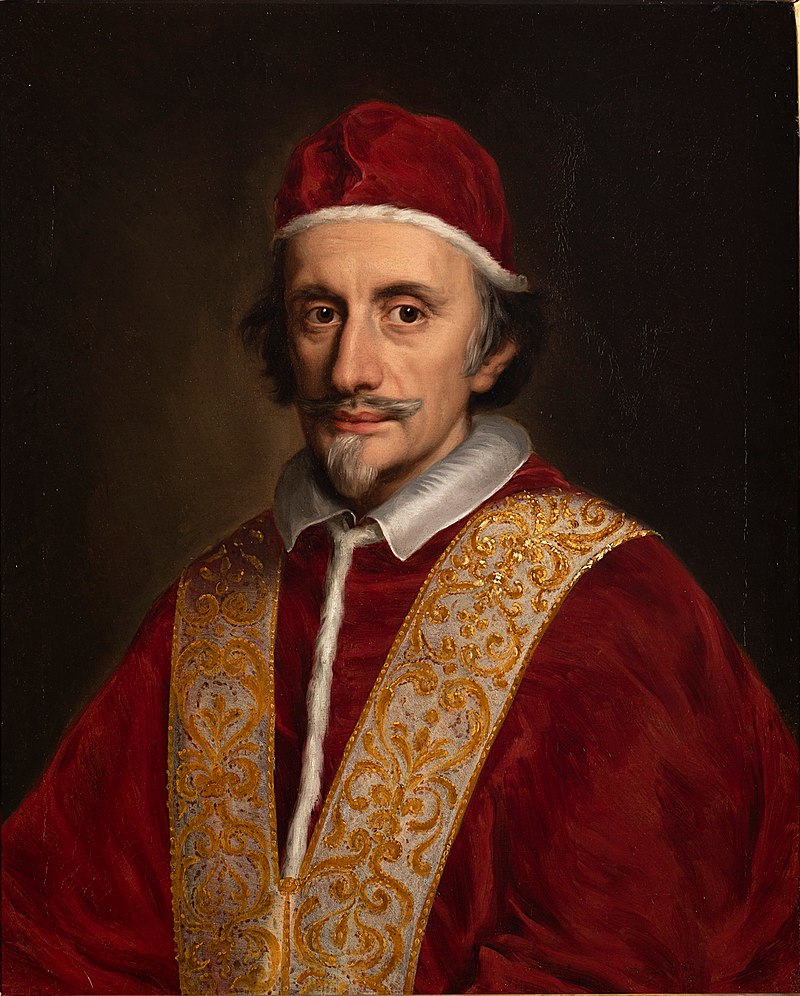
Bernini and the Roman artists must have felt that the pope was a stiff and difficult opponent who did not understand art. However, when I saw this portrait, I was struck by the image of a religious of high integrity, as evidenced by the large, sincere eyes and the sharply defined mouth. In fact, as mentioned in the commentary above, Inocentius XI lived a monk-like life.
Until now, the Pope had been fully a head of state rather than a religious figure. In fact, Roman Catholicism was a nation with a papal territory. As the head of the papacy, the pope had to fulfill his duties as a head of state as well as a religious leader. After the fall of the Roman Empire in the fifth century, it was the Vatican that united and ruled Rome. In order to maintain the state, it was not enough to keep things clean. Relations with other countries had to be built, and the warlike international situation in Europe during the Renaissance was truly frightening. It was against this historical background that Machiavelli'sThe Monarchist.The Vatican is the most important institution in the world. If the head of the Vatican had not possessed such a power and balance of power, it would have disappeared in no time.
In the midst of all this, Inocentius XI, a man who is truly a mirror of a religious figure, sat at the top. This is an event that can be called a major turning point of the times.
In fact, the pope's promotion of frugality led him to cancel the construction of Bernini's masterpiece, St. Peter's Square. How wonderful it would have been had this construction been completed has been previously(35) The Colonnade in St. Peter's Square is not finished! The original design and the intention of Bernini's design will change if you know."I also talked about this in my article on
It may be true that spending money on art when finances are tight may be a bad idea. But here in Rome, things are not so simple. In the above commentaryWhen the Jesuits received a donation from the King of Spain and asked permission to use the money to decorate the church, the Pope said, "If you have such money, do not spend it, but save it. If you have such money, save it and do not spend it. This is not the time to indulge in vanity. The chronicler, however, adds, "With this work 100 craftsmen could have lived for at least three years."This is a noteworthy point that was mentioned.
Rome has no industry of its own. In the past, there have been many attempts to develop local industries, but they have all failed. That is why the city had been creating jobs in the form of public construction. The fact that Innocent XI did not give money to the arts meant the loss of jobs in the city of Rome.
As a result, as explained above, Rome lost its position as the center of the arts. Moreover, its power declined not only in the arts but also in all other aspects.
How complex and interesting history is!
There was a greedy, scheming pope, and culture flourished because of that pope.
In contrast, when a serious and virtuous religious man becomes pope, his culture declines.
What are we to do then? Is human culture only a product of greed and intrigue? Is it possible that Roman art, which fascinates us with its overwhelming scale and beauty, is the result of such immense power?
The more I learn about Rome, the more interesting it becomes. I feel that the very life of human beings is condensed in this city. In this travelogue, I have seen the city of Rome, starting from the ruins of ancient Rome. In Rome, I strongly felt that politics, economy, religion, and culture are all one and the same.
Slander hurled mercilessly at Bernini, who no longer has his back.
The last days of Bernini's life were gloomier than ever. The last days of Bernini's life were even more gloomy than before, because rumors circulated not only in Italy but also in Europe that the dome of St. Peter's was about to crumble because of cracks discovered in the dome, which were blamed on the staircase that Bernini had built on the supporting wall of the dome during the reign of Urbanus VIII. Whenever they found even the smallest crack in the floor or wall, they felt as if the whole building was about to collapse, and they would stay away from St. Peter's for fear of some piece falling on them. On the other hand, there were those who, energized by the situation, showered Bernini with vitriolic criticism. So much so that the Pope was forced to commission an expert to investigate the safety of the dome in 180.
Baldinucci, who wrote a biography of Bernini after his death, was also outraged by such slander and devoted considerable space at the end of his biography to stating that the rumors were untrue and that he had researched the materials himself. The rumor that the dome of St. Peter's was about to collapse was frequently discussed until 1744, when Luigi Vanvitelli reinforced the dome with five iron rings.
Of course, Michelangelo's dome is still intact today, and even the fact that there was such a commotion is now completely forgotten. Common sense makes it hard to believe that Bernini's work on the supporting walls weakened the dome. Perhaps those who blamed Bernini were reminded of the case of St. Peter's bell tower. Scholars of the 20th century attributed the cracks in the dome to the unevenness of the foundation and stonework, the inaccuracy of the dome's shape, and the effects of natural calamities. Documents from the 16th century also state that the supporting wall had already cracked before the dome was hung, and that Bramante did not use very high quality materials for the construction of this supporting wall. It may also be necessary to consider that Sixtus V, the "great builder" who had the dome hung over this support wall, was able to complete the work in a short period of time (22 months).
In any case, Bernini was plagued by malicious rumors until the very end. In this regard, the biographer tells us that Bernini knew that they were untrue and did not allow himself to bemoan them. And he repeated in his mind, almost to the point of faith, his motto: "Time reveals the truth. He therefore willed his children to have the image of truth as their family legacy forever, while the tomb of Alexander VII, his last major work, commemorates this motto with an allegorical image of truth on its front, a rarity for a tomb.
Masumi Ishinabe, Yoshikawa KobunkanBernini, Giant Star of Baroque Art.p215-216
*some line breaks.
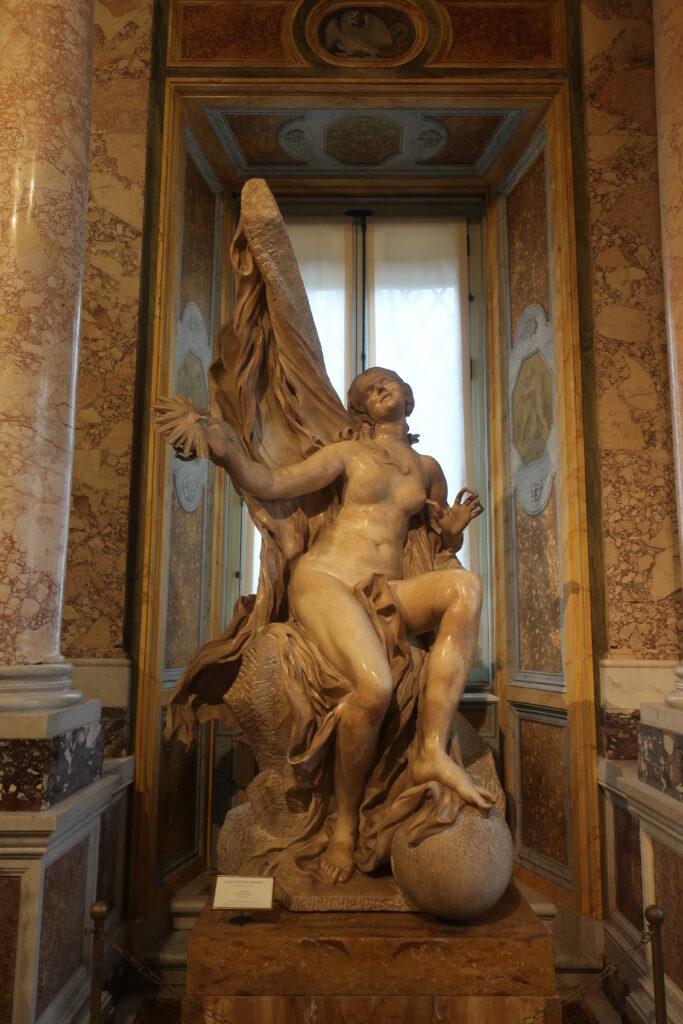
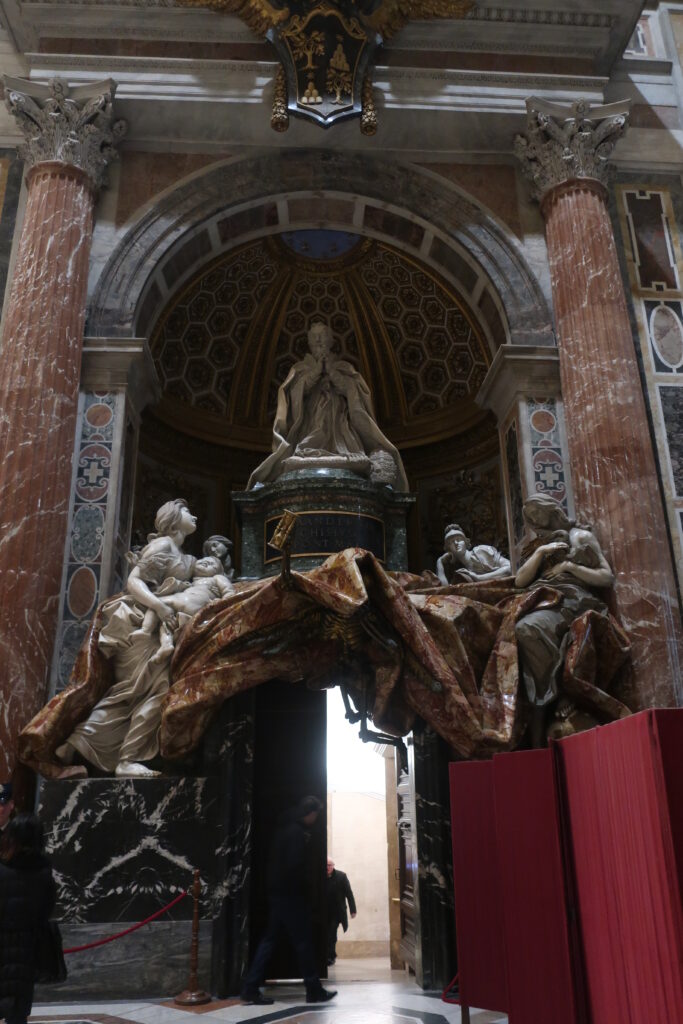
Even Bernini, who had so much glory, spent his last days in pain...I cannot help but feel saddened by this. If he had achieved his glory through arrogance or by pushing others away, it would have been karmic retribution. But he was never like that. That is why I feel regret.
Great artists are often prone to suffer from slander. It is not unusual for them to finally be appreciated decades after their death. People who are called geniuses are too immense to be understood by their contemporaries. It would be extremely fortunate if they were appreciated while they were alive.
Bernini certainly developed his talent from a young age and continued to produce great works. He was appreciated by many people. However, in his later years, the inevitable social situation of Rome's decline overshadowed his reputation.
When he had the strongest backing of the Pope, those who did not like Bernini had no choice but to keep their mouths shut, but now he has lost his backing and is the perfect scapegoat for the decline of Rome. Now he has lost his backing, and is a perfect scapegoat for the decline of Rome. What a sad world we live in.
When I hear about the tragedy of such slander, I cannot help but think of the Czech musician Smetana, who also suffered from slander. He, too, was tormented by slander and as a result, he became mentally ill and eventually lost his hearing.
I hope you will read the article above where I discuss this in detail.
And Bernini's words at the end of the above commentary, "Time reveals the truth".
In any case, Bernini was plagued by malicious rumors until the very end. The biographer tells us that Bernini knew they were untrue and did not allow himself to bemoan them. And he repeated in his mind, almost to the point of faith, his motto: "Time reveals the truth. So he willed to his children that the image of truth should forever be a family legacy, while the tomb of Alexander VII, his last great work, commemorated this motto by placing in front of it an allegorical image of truth, a rarity in tombs."
I think Bernini's soul, which lived through those hard days without hating anyone, is exactly condensed in the phrase "time reveals the truth. I can only say that it is a formidable spiritual power. Normally, we would have to mourn with humiliation and hatred. But Bernini was different.
When I saw the statue of "The Truth" at the Borghese Gallery, I still recall being deeply moved by the thought of Bernini's life.
I still think Bernini was a great man. Even though he was disgraced in the end and suffered from slander, we will always look up to his great spirit.
be unbroken
*The following photos are my Bernini notes. I hope you will find them useful.
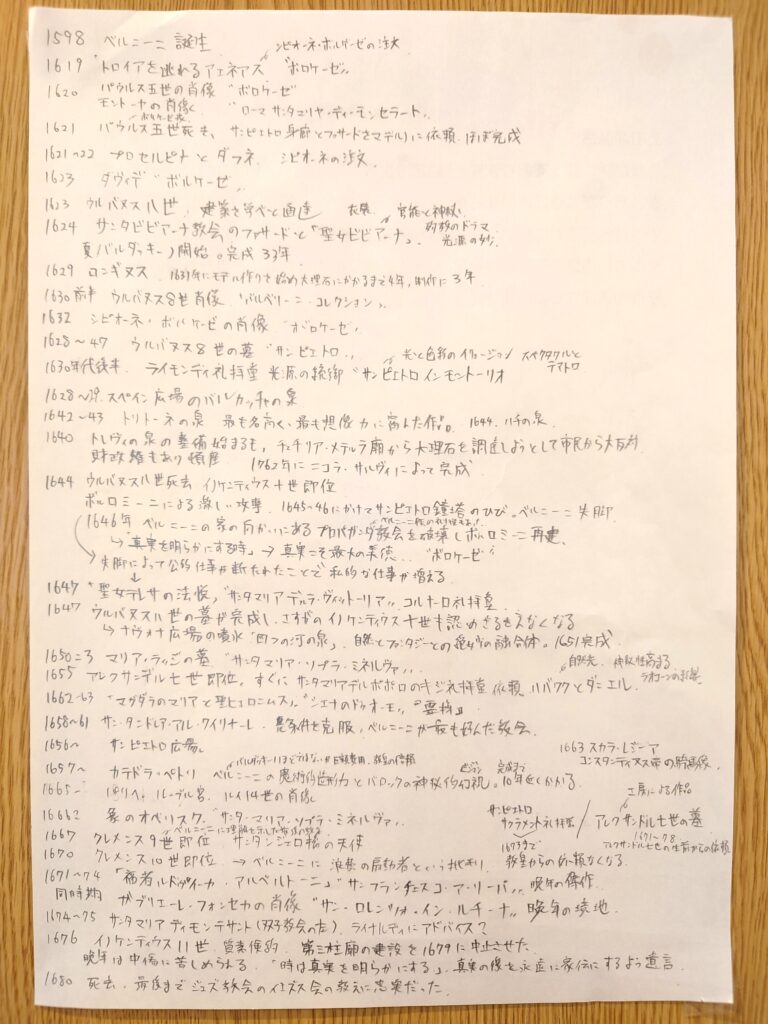
*The list of articles in the "Rome Travel Journal" can be found atCategory page hereindicates direction or goal (e.g. "to")
*Please visit this category page for recommended books to learn about Rome and Italy.
The Rise and Fall of the Roman Empire, the Vatican, and Roman Catholicism."
The Italian Renaissance and the Revolution in Knowledge."
Next Article.
Click here to read the previous article.
Related Articles











